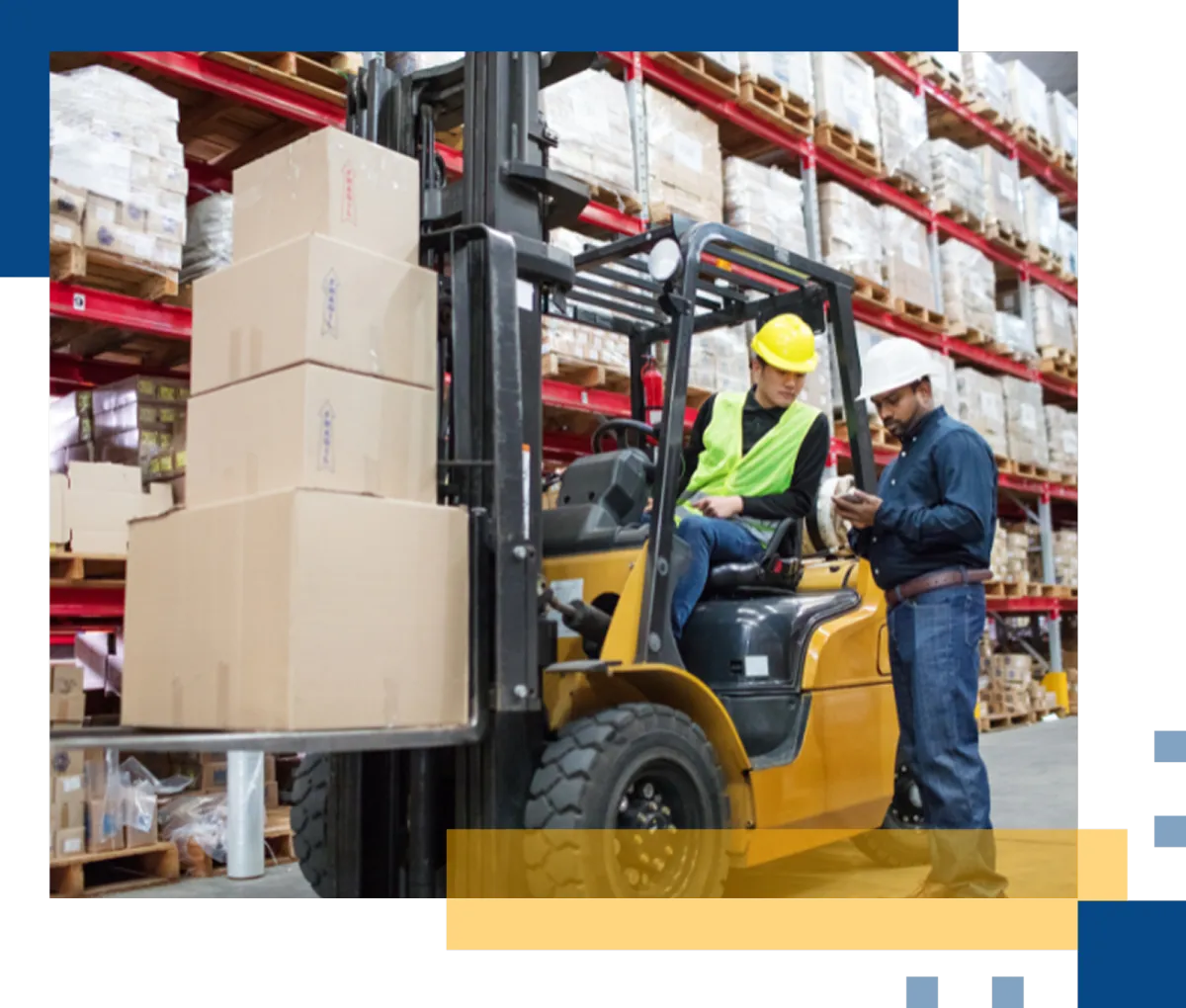

(828) 471-4317
Now Offering Spanish Safety Training!

Now Offering Spanish Safety Training!
Powered Industrial Trucks Update: 2025 Forklift Program Changes Employers Need
Forklift Safety Changes
What’s Changing for Forklifts in 2025

OSHA is moving to update design and construction references for powered industrial trucks (PIT) so new equipment aligns with modern ANSI/ITSDF B56 standards rather than the 1969 edition still cited in 29 CFR 1910.178. Employers should expect clearer references to current truck families (e.g., low/high-lift, driverless/AGVs, rough-terrain) and a pathway for older fleets.
According to OSHA’s rulemaking record, trucks manufactured on or after a final rule’s effective date would need to conform to the applicable current B56 standard (e.g., B56.1-2020, B56.5-2019, B56.6-2021). For legacy units, OSHA proposed allowing continued use if employers can demonstrate an “at least as protective” design basis versus the old 1969 reference. Procurement specs and acceptance checks will need updating.
Timing matters: the Spring 2025 regulatory agenda lists the PIT Design Standard Update in OSHA’s final rule stage with a target publication around November 2025. Plan now for a transition window to update specs, documentation, and supplier attestations as the rule finalizes.

Program Impacts: Design, Procurement, and Legacy Fleets
For new purchases, require manufacturers to certify conformity to the latest applicable ANSI/ITSDF B56 standard and provide documentation (model, serial, configuration, attachments) that matches the label plate and data plate. Build that requirement into purchase orders and site acceptance testing.
For existing fleets, inventory model years and standards basis. Where units were built to later B56 editions (post-1969), retain evidence (manuals, OEM letters) showing an equivalent or better design basis. That documentation supports OSHA’s proposed legacy pathway and helps defend decisions during audits and client reviews.
Finally, align maintenance records and modification approvals. When adding or changing attachments, keep OEM approvals and updated capacity plates on file; these are longstanding expectations under 1910.178 and remain enforcement staples. #
Training & Evaluation: What You Must Reinforce

Operator training remains anchored in 1910.178(l). In 2025, OSHA clarified that “direct supervision” during hands-on training means the qualified trainer is physically present where practical training/evaluation occurs—watching, coaching, and able to intervene. Remote oversight doesn’t satisfy this requirement. Update your lesson plans and observation checklists accordingly.
Refreshers are still triggered by observed unsafe operation, incidents/near-misses, assignment to a different truck type, or changes in workplace conditions. Keep skill verifications task-specific (aisle widths, grades, docks, racking, pedestrians), and document both the evaluation and the evaluator’s qualifications.
Round out the program with pedestrian awareness, spotter protocols, and battery/charging or LPG cylinder handling. Standardize pre-use inspections and remove defective trucks from service until repaired and rechecked—then log the clearance.
Operator training remains anchored in 1910.178(l). In 2025, OSHA clarified that “direct supervision” during hands-on training means the qualified trainer is physically present where practical training/evaluation occurs—watching, coaching, and able to intervene.
Refreshers are still triggered by observed unsafe operation, incidents/near-misses, assignment to a different truck type, or changes in workplace conditions. Keep skill verifications task-specific (aisle widths, grades, docks, racking, pedestrians), and document both the evaluation and the evaluator’s qualifications.
Round out the program with pedestrian awareness, spotter protocols, and battery/charging or LPG cylinder handling. Standardize pre-use inspections and remove defective trucks from service until repaired and rechecked—then log the clearance.

Safety PLCs and sensor suites don’t replace training. If your trucks feature speed-limiters, proximity alerts, or telematics, include those functions in training and evaluations so operators understand limits, alarms, and fail-safe behaviors—and know not to rely on electronics to compensate for unsafe driving.
For multilingual crews, deliver instruction and evaluation in the language employees understand. Retain rosters, tests, practical check sheets, and the route taken during evaluations. When temps or contractors operate your trucks under your supervision, they must meet the same training/evaluation criteria before use.
Maintenance, Attachments, and Modifications
Keep trucks in safe condition via scheduled maintenance, OEM procedures, and qualified technicians. Document corrections from pre-use inspections, tag out unsafe units, and verify fixes before returning to service. For battery-electrics, include eyewash/neutralization supplies and charger ventilation; for IC trucks, manage fueling, exhaust, and CO monitoring where applicable.
Attachments and modifications require manufacturer approval and updated capacity plates. Train operators on derated capacities with clamps, booms, and extended forks; re-evaluate stability and turning characteristics in your facility’s conditions. Store approval letters and revised data plates with the asset file and at the truck.
When integrating AGVs or semi-autonomous features, map mixed-mode rules (manual vs. automatic). Define speed zones, crossing points, and handoff procedures. Validate emergency stops and detection fields after any layout change, then retrain affected operators and pedestrians.
Roadmap to Update Your Forklift Program
Start with a gap assessment: inventory trucks by model year/standard, attachments, capacities, and operating areas. Compare your policies to 1910.178 and the anticipated design-standard update; plan procurement language, acceptance tests, and legacy documentation. Build a change calendar keyed to the final rule’s effective date and any phase-in.
Update training: clarify direct-supervision requirements for hands-on sessions, refresh evaluator materials, and re-qualify trainers as needed. Expand evaluations to cover site-specific risks (dock edges, trailers, freezers, pedestrians) and new tech. Archive observations, corrective actions, and rechecks.
Formalize maintenance and modification control: enforce red-tag/return-to-service steps, maintain OEM approvals, and keep capacity plates current. Add annual program reviews that sample training files, inspection logs, and a few trucks end-to-end—from pre-use to repair confirmation—to prove system health.

Procurement teams should require supplier declarations of conformity to the applicable B56 edition and provide manuals, data plates, and training aids with delivery. For leased units, ensure the lessor supplies the same documentation and that your site acceptance follows identical checks before use.
Supervisors close the loop. Observe driving, enforce speed limits and right-of-way, and correct behaviors in the moment. Track near-misses, impacts, and damage via telematics or incident reports, then target refreshers. Quarterly reviews with safety, ops, and maintenance keep your PIT program aligned with evolving rules and real-world risks.
How Nain & Associates Can Help
Nain & Associates, LLC builds forklift programs that stand up to audits and inspections. We assess your fleet against the anticipated design-standard update, align procurement specs, and organize legacy documentation. Our OSHA-authorized trainers deliver bilingual operator and evaluator courses, hands-on checkouts, and site-specific evaluations that reflect your aisles, docks, racking, and pedestrian flows.
We also tighten maintenance and modification controls, standardize pre-use inspections, and reconcile data plates, attachment approvals, and service records. Need scale? We can embed on-site safety professionals to clear backlogs, run observations, and coach supervisors. Ready to refresh your PIT program before the rule lands? Call (828) 471-4317 or request services—we’ll help you create a practical, defensible system that improves safety and keeps production moving.
Have Questions About What We Offer?
To learn more about our services, contact us today!
Have Questions About What We Offer?
Contact us to learn more about our services

Speak with a
safety Specialist
Workplace Safety Training & Consulting Experts for
Charlotte, Hickory, Asheville, North Carolina and
the Southeast for since 2005!
Design By: Customers.Plus
© 2025 | Nain & Associates LLC


